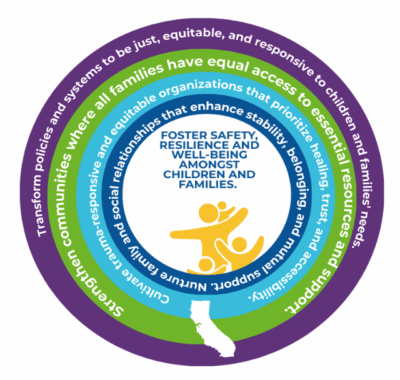These beliefs reflect the core truths that guide how we understand the challenges facing children and families—and how meaningful, lasting change happens.
Grounded in research, lived experience, and decades of practice, our guiding principles shape our strategies, inform our theory of action, and serve as the foundation for how we design and deliver our work. They are the lens through which we see the world and the reason we pursue this mission with urgency and care.
Research shows healthy families share five commonalities. These five protective factors can be supported and strengthened within vulnerable families to combat risk factors and prevent incidences of child abuse.
Importantly, the Protective Factors are not just tools for working with individual families—they also reflect the conditions communities and systems must create to ensure all families can thrive.
Research shows these Domains of Wellness actively build resilience and mitigate the impact of toxic stress in children and their caregivers. These skills and practices help to decrease our stress hormones and inflammation for healthier brains and bodies.
Our goals are intentionally woven into each level of the ecological framework of prevention, which is at the heart of Safe & Sound’s approach. This framework acknowledges that child and family well-being is shaped by a complex web of influences—from individual experiences to broader societal conditions. To truly prevent harm and foster resilience, our work must be holistic, multi-level, and interconnected.
